Research Projects I
The first round of integrative projects within the scope of the Adaptive Life programme comprises of 13 PhD projects that started between December 2016 and May 2017.

The role of the placenta in transmitting disturbed serotonin levels from the maternal environment
PhD candidate: Laura Staal
PIs: Jocelien Olivier, Bregje Wertheim, Bart Pollux & Torsten Plösch

The ecology of sleep - New insights on sleep homeostasis from EEG studies in the wild
PhD candidate: Sjoerd van Hasselt
PIs: Peter Meerlo, Theunis Piersma & Niels Rattenborg

Phenotypic plasticity and species divergence - Linking trait architecture, fitness and macro-evolution
PhD candidate: Elodie Wilwert
PIs: Martine Maan, Rampal Etienne & Louis van de Zande

Human induced eco-evolutionary feedbacks restructure ecosystems and limit their recovery
PhD candidate: Casey Yanos
PIs: Klemens Eriksson, Michael Fontaine & Martine Maan

Evolution of complex molecular networks in immunity
PhD candidate: Peter Hoitinga
PIs: Bregje Wertheim, Michael Fontaine & Sander van Doorn

Is sex chromosome evolution driven by sexual antagonism? - A test with houseflies
PhD candidate: Martijn Schenkel
PIs: Leo Beukeboom, Ido Pen & Jean-Christophe Billeter

Tracing evolution of annual timing in a long distance migratory song bird - A combined natural behaviour and neuro-genetics approach
PhD candidate: Xuelai Wang
PIs: Christiaan Both, Roelof Hut & Bart Kempenaers

Reproductive parasitism in a love triangle – Wolbachia, master manipulator or microbe mediator?
PhD candidate: Pina Brinker
PIs: Leo Beukeboom, Joana Falcao Salles & Michael Fontaine

Mosaic ageing
PhD candidate: Merijn Driessen
PIs: Ido Pen, Irene Tieleman & Simon Verhulst

Should I stay or should I go? - Mechanisms and evolution of optimal group size determination in Drosophila melanogaster
PhD candidate: Tiphaine Bailly
PIs: Jean-Christophe Billeter, Bregje Wertheim & Rampal Etienne

Adaptive parental effects in predictable and unpredictable environments
PhD candidate: Pinar Güler
PIs: Ido Pen, Jean-Christophe Billeter & Ton Groothuis

Functional neurogenetics of latitudinal adaptation to photoperiod in voles
PhD candidate: Laura van Rosmalen
PIs: Roelof Hut, Louis van de Zande & David Hazlerigg

Variation and adaptive potential in bacterial gene pools exposed to different mechanisms of mutation
PhD candidate: Anni Veenstra-Skirl
PIs: Sander van Doorn, Per Palsbøll & Oscar Kuipers
The role of the placenta in transmitting disturbed serotonin levels from the maternal environment - A comparative study with livebearing fish, rats and humans
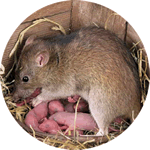
The placenta plays a pivotal role in embryonal development in various animal taxa and adapts to changes in the maternal environment. To unravel the mechanisms by which the placenta does this, the effects of serotonin levels in the maternal environment are assessed on the development of the offspring and alterations in the placenta. Furthermore we want to elucidate how conserved the alterations found in the placenta of Poeciliidae (live-bearing fish), rats and humans are. Together this will deliver novel insight into the mediating role of the placenta during pregnancy.
The ecology of sleep - New insights on sleep homeostasis from EEG studies on godwits in the wild
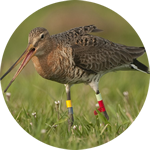
All mammals and birds appear to spend a large part of their life asleep but the function of this enigmatic behavior and physiological state is still unknown. Surprisingly, field studies to examine sleep under the natural conditions where it evolved have so far been exceptionally rare. In fact, in most ecological studies that assess behavior in the wild, sleep episodes are often little more than blanks in the activity recordings. However, if sleep indeed serves important functions, then the time available for sleep may be a determining factor in the fitness of an individual. In this project we will exploit the recent miniaturization of EEG technology to study sleep in birds under ecologically relevant conditions, particularly during the breeding season and during long-distance migration when the time for sleep and recovery often appears to be limited. Together these studies will provide unique insights in the ecology of sleep and sleep homeostasis in the real world.
Phenotypic plasticity and species divergence - Linking trait architecture, fitness and macro-evolution
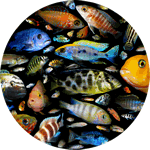
What is the role of phenotypic plasticity in species diversification? Plasticity may help to colonise new niches, but on the other hand it may weaken the strength of divergent selection. We address this question by studying visual plasticity in cichlid fish. We combine phylogenetic comparative analysis (species richness patterns) with experimental investigation of visual plasticity (retinal pigment expression) and its fitness consequences (growth and survival under competition).
Human induced eco-evolutionary feedbacks restructure ecosystems and limit their recovery

Declines in top-predators have enabled the threespine stickleback to increase hundred-fold in the Baltic Sea the past decade. Today, stickleback have reorganized the coastal food-web dramatically, causing algal overgrowth and decreased water quality. We hypothesize that the problems are caused by a benthic ecotype of stickleback that have adapted rapidly to the new biological conditions and thereby locked coastal areas in a societally undesirable state. The project will combine ecological field studies, behavioral experiments and population genetics to characterize the ecological and evolutionary impacts of the benthic ecotype and the underlying genetic mechanisms.
Evolution of complex molecular networks in immunity
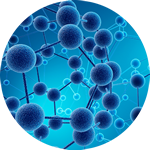
Many traits are coordinated by complex molecular networks. Genetic variation within these networks can leads to phenotypic variation that natural selection can act upon. We will infer the gene networks that regulate Drosophila immunity against parasitoids, and functionally characterize how genetic variation within this network affects immune function. By integrating bioinformatic analyses of genomic datasets, functional genetic experiments and computational modelling, we aim to provide detailed insight in the molecular networks of immunity and how these networks are modified by adaptive evolution.
Is sex chromosome evolution driven by sexual antagonism? - A test with houseflies
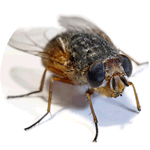
Sexual antagonism or sexual conflict occurs when the two sexes have divergent optimal fitness strategies concerning reproduction. The importance of this phenomenon in driving evolutionary changes in development and behaviour is still debated. In this proposal we investigate the role of sexual antagonism in the evolution of sex chromosomes, by combining theoretical and experimental approaches to the polymorphic sex determination system of the housefly. Housefly populations carry male-determining factors on different chromosomes and possess two different female determiners. Our objectives are to determine 1) the coevolutionary dynamics of sex determination (SD) and sexually anatagonistic (SA) genes; 2) how SA and SD genes are distributed in the housefly genome, and how this is affected by recombination on standard and neo-sex chromosomes in males and females; and 3) whether neo-sex chromosomes undergo accumulation of genes with sex-limited expression (sexualisation of gene content).
We will use evolutionary models to study the coevolutionary dynamics of sexual antagonism and sex determination caused by interactions between male courtship behaviour and sex peptides, body size of both sexes, and female sex peptide receptors and mating preferences. We will measure recombination rates of autosomes and (neo-) chromosomes with molecular markers. The degree and genetic basis of sexually antagonistic selection in houseflies will be measured with interpopulation crosses and genomic screens for candidate loci. We will apply artificial selection and transmission of neo-sex chromosomes through one sex by experimental evolution, combined with transcriptomic analyses, in order to investigate sexualisation of sex chromosome gene content. The results will shed light on how sexual antagonism can drive evolutionary processes at the genomic level.
Tracing evolution of annual timing in a long distance migratory song bird - A combined natural behaviour and neuro-genetics approach
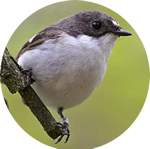
A major challenge in this era of global change is predicting the possibilities and the limits of organisms to adapt to human induced environmental change. This PhD-project investigates how a long-distance migratory bird adapts its timing to the advancing phenology of its breeding area. This project seeks proof for evolutionary adjustment by combining field and lab-work on the proximate mechanisms underlying individual and population variation in annual time schedules.
Reproductive parasitism in a love triangle – Wolbachia, master manipulator or microbe mediator?
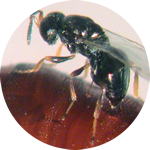
We will study the triangular interactions between cytoplasmic incompatibility inducing Wolbachia bacteria, the host nuclear genome and the remainder of the microbiome in the parasitoid wasp genus Nasonia. Questions that will be addressed are how vertical inheritance and environmental acquisition shape microbiome composition in Wolbachia-infected and –uninfected individuals; how different microbiome compositions affect reproductive manipulation by Wolbachia; whether novel Wolbachia infections lead to shifts in microbiome composition; and how Wolbachia affects host gene expression in interaction with the microbiome.
Mosaic ageing
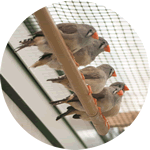
Mosaic ageing occurs when senescence of different traits is not synchronous. Within-individual variation between traits in both the pace and shape of senescence appears common, but why traits evolved to have different senescence trajectories is not well understood. Senescence in an evolutionary sense (declining reproduction/survival) is an emergent property of senescence of all body functions combined. Hence an understanding of mosaic ageing is essential to understand organismal senescence. In this project we will 1) develop theory to explain the evolution of mosaic ageing, 2) study mosaic ageing in an innovative ecologically relevant ageing model, and 3) test the theoretically derived predictions with existing and new data.
Mosaic ageing will be quantified in captive zebra finches subjected to different combinations of three manipulations, to be applied for life. We will manipulate developmental conditions (brood size), foraging conditions in adulthood (easy vs hard) and reproductive investment (ad lib vs prohibited). Based on recent zebra finch studies by others and ourselves we are confident that these manipulations combined will create a broad range of ageing rates. Traits that will be tracked longitudinally until natural death include an assembly of immunological traits (immunosenescence), selected physiological markers, and reproductive success.
Using evolutionary models we will explore the conditions that lead to the evolution of mosaic ageing. In the models, individuals will be characterized by multiple traits that each require resources for maintenance and affect fitness. Furthermore, we will identify the assumption set(s) that yields the mix of ageing trajectories and relations between trait senescence, mortality and reproduction observed in our study system. Our project, integrating theoretical and empirical studies, will critically advance our understanding of the process and evolution of mosaic ageing.
Should I stay or should I go? - Mechanisms and evolution of optimal group size determination in Drosophila melanogaster
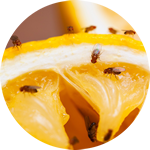
All of life is social! Organisms have an inherent drive to form groups, which is explained by the fitness benefits individuals accrue from group membership. Such benefits include greater survival and higher chances of reproduction. However there is a limit to these benefits because overcrowding results in resource over-exploitation. This balance of costs and benefits determines the ability of species to invade new niches, the likelihood of their extinction and the optimal exploitation of their environment. Because of the importance of density-dependent fitness effects of group size, there must be strong selection for optimal strategies on whether individuals should join a group or go elsewhere. Surprisingly, how individuals assess optimal group size and whether, why and how plasticity in joining/avoidance behaviour evolves are poorly understood processes. This is due to the lack of studies integrating both ultimate and proximate approaches to aggregation.
Here we aim to combine our unique expertise on evolutionary and behavioural genetics, ecology and social behaviour to understand the mechanisms and evolutionary processes underlying group formation in the fruit fly Drosophila melanogaster. The genetic basis and evolvability of group formation will be studied with an evolve-and-resequence approach, complemented by a genome-wide association study. The fitness consequences of aggregation will be studied by determining frequency dependent fitness effects in flies selected for different aggregation strength. Building on our theoretical work, we will construct ecological and evolutionary models specifically tailored to Drosophila life history, experimental group size, and the genetic architecture and mechanisms of aggregation uncovered by our study. Thus, by integrating theory and experiments, as well as mechanisms and experimental evolution, we will advance our understanding of how evolutionary processes and neuronal mechanisms determine when individuals should stay in or go away from a group.
Adaptive parental effects in predictable and unpredictable environments - Integration of experimental evolution, neurogenetics, physiology and theoretical modelling
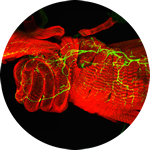
In order to predict the adaptive capacity of species in our rapidly changing world, accurate models for evolutionary change are needed, based on the mechanisms underlying such change. Here, we propose to investigate a hotly debated pathway for adaptive plasticity – non-genetic heritability via parental effects. If parental and offspring environments are correlated, then parental phenotype can provide developing offspring with information regarding their future environment and trigger a matching developmental trajectory in the offspring. However, the role of parental effects in adaptive plasticity is poorly understood due to 1) lack of evolutionary theory that incorporates non-genetic determinants of development; 2) experimental studies that vary transgenerational environmental correlations and quantify parental effects; 3) lack of knowledge of the underlying genetic architecture and physiological mechanisms.
In this project we will study parental effects from all three angles by integrating theoretical modeling, experimental evolution, (neuro) genetic analysis, and physiological studies, building on experimental data and the genetic toolbox of Drosophila melanogaster. Flies will be subjected to different regimes of between-generation temperature transitions (zero, positive or negative correlations). We will measure the contribution to adaptation of parent and offspring through a fully factorial match-mismatch design. The genetic basis of evolved parental effects and offspring plasticity will be studied with an evolve-and-resequence approach, complemented by candidate gene approach and physiological analyses related to heat shock proteins and egg composition. Building on our recent theoretical work, we will construct evolutionary models specifically tailored to Drosophila life history, the experimental environmental fluctuations, and the genetic architecture and mechanisms of parental and offspring traits uncovered by our study. Thus, by an innovative integrative approach we will critically advance our understanding of transgenerational adaptive plasticity and quantify its importance for adaptation in a rapidly changing world.
Functional neurogenetics of latitudinal adaptation to photoperiod in voles
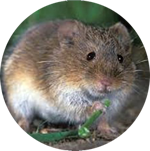
In this project we will describe evolutionary adaptation to latitude use recent molecular knowledge of the neurobiological mechanism underlying photoperiodism. The genes and brain regions involved in photoperiodic induction of gonadal development have recently been described in detail and can now be applied to understand functional adaptation in timing of reproduction. Voles can be the appropriate project species, since they are one of the most abundant and ecologically relevant mammalian herbivores. The project will address a key question in biology: what are the mechanisms of evolutionary adaptation to environmental variation.
Variation and adaptive potential in bacterial gene pools exposed to different mechanisms of mutation
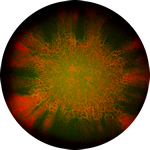
Mutations are caused by a variety of molecular mechanisms. Whereas all of these produce random variation in fitness, their effects on the genetic architecture of traits are quite distinct. Therefore, in this project, we will test whether and how mechanisms of mutation bias microevolutionary processes and influence the future adaptive potential of populations. To answer this question, we will upregulate specific mechanisms of mutation in bacteria and study their adaptation in a chemostat evolution experiment.
| Last modified: | 30 August 2017 8.38 p.m. |
